| Mo: 08:30 - 20:00 Uhr |
| Di: 08:30 - 19:00 Uhr |
| Mi: 08:30 - 19:00 Uhr |
| Do: 08:30 - 19:00 Uhr |
| Fr: 08:30 - 19:00 Uhr |
All appointments by appointment
Free parking is available for our patients in the parking garage under the practice.
- Practice
- Philosophy
- Orthodontist
- Methods of treatment
- Treatment procedure
- Appointment booking
- Appointment booking Doctolib
- Team
- Impressions
- Blog
- Glossary of terms
- Contact information
- Anfahrt zur Kieferorthopädie aus der Altstadt
- Anfahrt zur Kieferorthopädie aus Schwanthalerhöhe
- Anfahrt zur Kieferorthopädie aus Haidhausen
- Anfahrt zur Kieferorthopädie aus Neuhausen
- Anfahrt zur Kieferorthopädie aus Isarvorstadt
- Anfahrt zur Kieferorthopädie aus Westpark
- Anfahrt zur Kieferorthopädie aus Großhadern
- Anfahrt zur Kieferorthopädie aus Thalkirchen
- Anfahrt zur Kieferorthopädie aus Ludwigvorstadt
- Anfahrt zur Kieferorthopädie aus Obergiesing
- Equipment
- Services
- Aligners
- Modern orthodontics
- Invisible braces
- Invisalign® Aligner
- Spark Aligners
- Angel Aligner
- Internal braces
- Orthodontics for children
- Orthodontics for adolescents
- Orthodontics for adults
- Orthodontics for best agers
- Orthodontics for musicians
- Removable braces
- Gentle braces
- Sports mouthguard
- Bleaching
- Gummy Smile
- Treatment monitoring
- Misalignments
- Info
- SOS
- Jobs
- FAQ
Dr. Sebastian Krause
| [Translate to English:] Mo: 08:30 - 20:00 Uhr |
| Di: 08:30 - 19:00 Uhr |
| Mi: 08:30 - 19:00 Uhr |
| Do: 08:30 - 19:00 Uhr |
| Fr: 08:30 - 19:00 Uhr |
All appointments by appointment
Free parking is available for our patients in the parking garage under the practice.
Dentistry
The world of dentistry: a comprehensive overview of specialties and specializations
Endodontology
Endodontology deals with the diagnosis and treatment of diseases of the inside of the tooth, in particular the root canals. Endodontists carry out root canal treatments to remove inflamed tissue and preserve the affected tooth.
Prophylaxis
Prophylaxis includes preventive measures to prevent tooth decay, periodontitis and other dental diseases. This includes regular check-ups, professional dental cleanings and advice on oral hygiene.
Dental technology
Dental technicians work closely with dentists to produce customized dentures and other dental products. They use state-of-the-art mate
Periodontology
Periodontology focuses on the periodontium, which comprises the tissue and structures that anchor the teeth in the jaw. Periodontists treat diseases of the gums and jawbone to prevent tooth loss and maintain the stability of the teeth.
Conservative dentistry
Conservative dentistry aims to preserve teeth and maintain their function without having to resort to dentures. This specialty overlaps with other areas such as periodontology and endodontology.
Oral surgery
Oral surgery includes surgical procedures in the oral cavity, on the gums and the oral mucosa. This includes the removal of wisdom teeth, implant insertions and the treatment of oral diseases.
Implantology
Implantologists specialize in inserting dental implants to replace missing teeth. These implants serve as artificial tooth roots that can support crowns, bridges or dentures and provide a permanent solution to tooth loss.
Laser dentistry
The use of lasers expands the treatment options in dentistry and offers a gentle alternative to conventional procedures. Lasers are used for various treatments, including root canal treatment, caries removal and the treatment of sensitive tooth necks.
Pediatric dentistry
Pediatric dentists specialize in the needs of children and adolescents and place particular emphasis on preventive measures and the early treatment of dental problems.
Prosthetics
Prosthetics deals with the replacement of missing teeth and tissue in order to restore the function and aesthetics of the dentition. Prosthodontists plan and manufacture individual dentures that meet the individual needs and anatomical conditions of each patient.
Cosmetic Dentistry
Cosmetic dentistry focuses on improving the appearance of teeth and smiles. Treatments include teeth whitening, tooth corrections and aesthetic restorations.
Forensic dentistry
Forensic dentistry uses dental methods to identify individuals and solve crimes. Forensic dentists work with law enforcement agencies to help identify victims and analyze bite wounds.
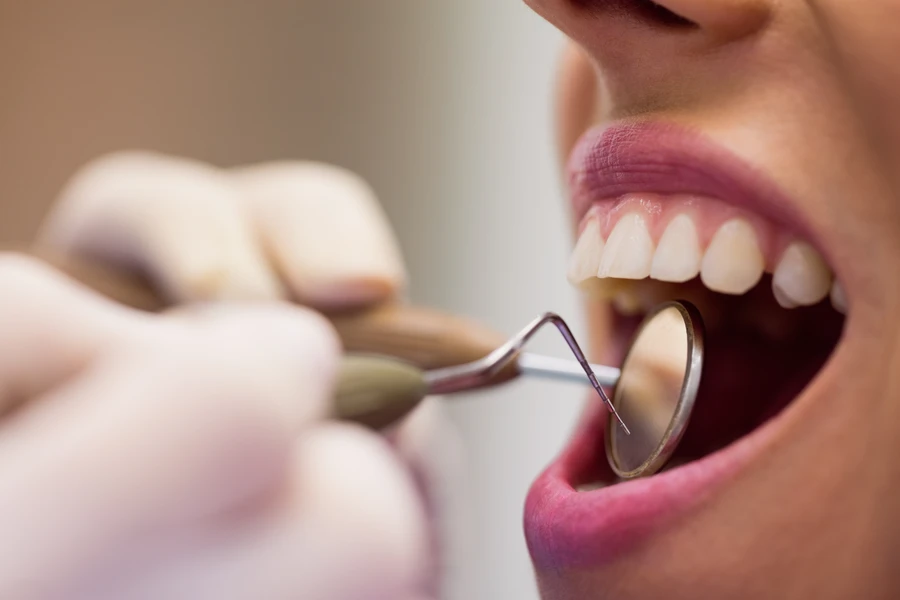
Periodontology
Maintaining Oral Health through the Care of the Periodontium
Periodontology is a vital branch of dentistry that focuses on the prevention, diagnosis, and treatment of diseases affecting the periodontium—the supporting structures that anchor the teeth in place. The periodontium consists of various tissues, including the gums, cementum, periodontal ligament, and the jawbone, all of which work together to secure the teeth in the jaw.
Why Is Periodontology Important?
Healthy gums and an intact periodontium are crucial for long-term dental health. Poor oral hygiene and other factors can lead to periodontal diseases, which may have serious consequences. If left untreated, periodontitis can result in tooth loss and increase the risk of other systemic conditions such as heart disease, diabetes, and respiratory infections.
Major Conditions in Periodontology:
- Gingivitis: This is an inflammatory condition of the gums caused by plaque, a sticky film of bacteria that forms on the teeth. Gingivitis often presents with red, swollen gums that may bleed during brushing. At this stage, the damage to the periodontium is still reversible.
- Periodontitis: If gingivitis is left untreated, it can progress to periodontitis, a more severe form of gum disease. In periodontitis, bacteria penetrate deeper into the gums and jawbone, leading to inflammation and destruction of tissue. This can cause teeth to become loose and eventually result in tooth loss.
Treatment Options in Periodontology:
- Professional Teeth Cleaning: Regular cleanings by a dentist or dental hygienist are essential to remove plaque and tartar that accumulate on the teeth and can lead to periodontal disease.
- Scaling and Root Planing: This is a deeper cleaning procedure where tartar and plaque are removed from the tooth roots, and the root surfaces are smoothed to make it harder for bacteria to reattach.
- Surgical Treatments: In advanced cases of periodontitis, surgical intervention may be necessary to remove infected tissue, treat bone loss, and restore the periodontium.
Preventing Periodontal Diseases:
Good oral hygiene is the key to preventing periodontitis and other gum diseases. This includes regular brushing, flossing, maintaining a balanced diet, limiting the consumption of sugary and acidic foods, and attending routine dental check-ups and professional cleanings.
Endodontics: The Science of Root Canal Treatment
Endodontics is a specialized field of dentistry that focuses on the diagnosis, prevention, and treatment of diseases affecting the dental pulp and surrounding tissues. The dental pulp, also known as the pulp, is the soft tissue inside the tooth that contains blood vessels, nerves, and connective tissue. When this tissue becomes inflamed or infected, it can cause severe tooth pain, swelling, and other serious issues.
Why Is Endodontics Important?
Endodontics plays a crucial role in preserving natural teeth. By treating diseases of the dental pulp, teeth that might otherwise need to be extracted can often be saved. Losing a tooth can lead to functional limitations in chewing and speaking, as well as negatively impact the aesthetic appearance of the mouth.
Treatments in Endodontics
The most common endodontic procedure is root canal treatment. In this procedure, the endodontist removes the infected or inflamed tissue from inside the tooth, thoroughly cleans the root canal, and then fills it with a special material to seal and protect it. This allows the tooth to continue functioning in the mouth without causing pain or further complications.
Modern Techniques in Endodontics
Endodontics has advanced significantly in recent years thanks to cutting-edge technologies and treatment methods. For example, digital X-rays and 3D imaging provide more accurate diagnosis and treatment planning. Additionally, tools such as machine-made files and laser technology have improved the efficiency and precision of endodontic procedures, leading to better outcomes and shorter treatment times for patients.
Prevention Is the Best Protection
While endodontics offers advanced treatment options, the best way to avoid problems with the dental pulp is through consistent oral hygiene and regular dental check-ups. Regular brushing, flossing, and limiting the consumption of sugary foods and drinks can prevent many potential endodontic issues.
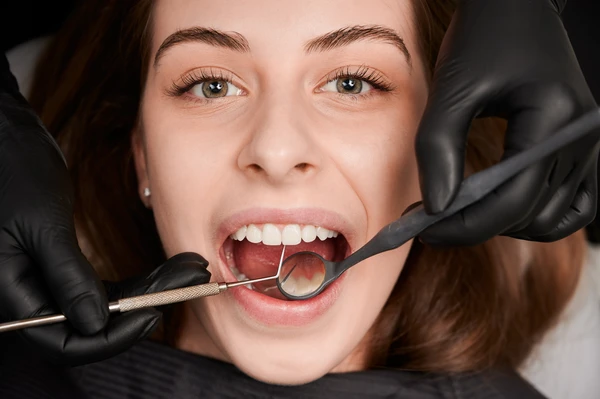
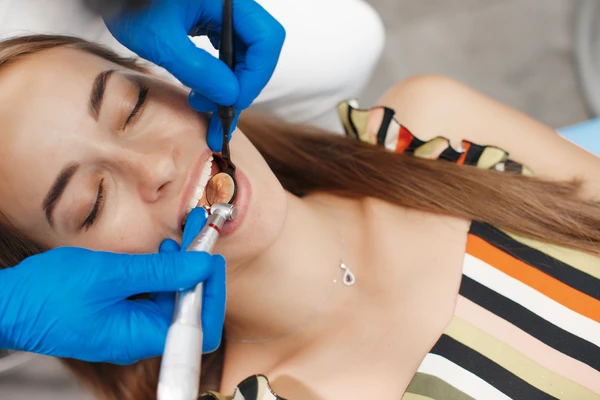
Implantology: The Key to a New Smile
Implantology is a groundbreaking field of dentistry that allows for the replacement of lost teeth with artificial roots, restoring both the function and aesthetics of the mouth. Dental implants are small titanium posts inserted into the jawbone, providing a stable foundation for crowns, bridges, or dentures. They offer a long-term solution to tooth loss and have significantly improved the lives of millions of people worldwide.
Why Choose Implants?
Losing one or more teeth can lead to various issues, including difficulties with chewing, speaking, and even self-confidence. Traditional options like bridges or dentures provide temporary solutions but may not offer the same level of stability and functionality as implants. Implants mimic the natural structure of teeth and offer a permanent solution that enhances the appearance, functionality, and overall health of the mouth.
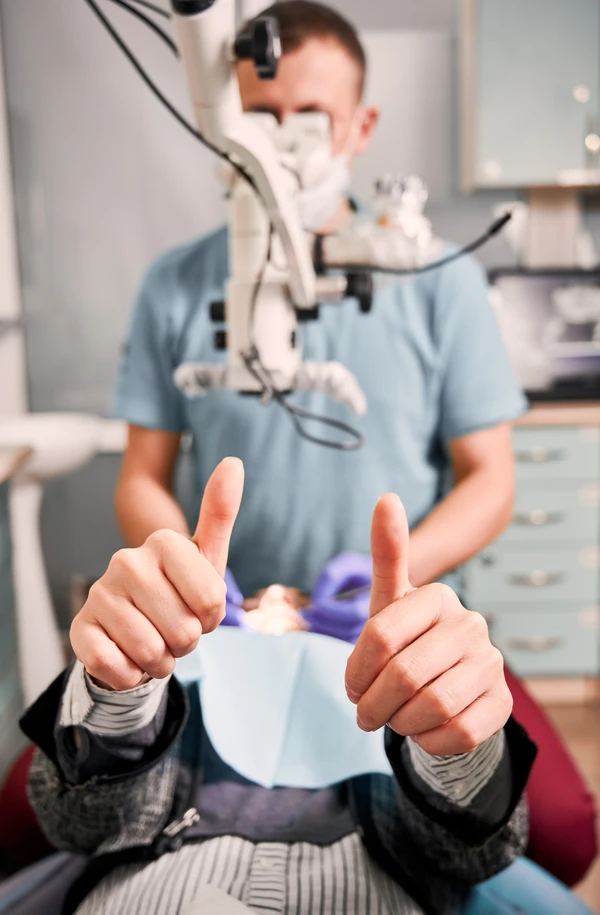
Benefits of Implants
Implants offer numerous advantages over traditional tooth replacement options:
-
Natural Appearance: Implants look and function like natural teeth, blending seamlessly with the rest of your smile.
-
Improved Functionality: They provide a stable foundation for chewing and speaking, significantly enhancing quality of life.
-
Long-Term Solution: Implants are durable and, with proper care, can last a lifetime.
-
Jawbone Preservation: Implants stimulate the jawbone, helping to maintain its volume and structure over the long term.
-
Enhanced Self-Confidence: By restoring a full smile, implants can boost self-esteem and overall well-being.
The Implantation Process
The implantation process begins with a thorough examination and planning by a specialized dentist or implantologist. Using advanced imaging technologies like CT scans, the jawbone is analyzed, and a customized treatment plan is developed. The actual implantation occurs in several stages. First, the implant is placed into the jawbone. Over the following weeks or months, the implant fuses with the bone in a process known as osseointegration. Once the implant is securely anchored, an artificial tooth crown or prosthesis is attached to the implant, restoring the natural appearance and functionality of the tooth.

Prosthetics: A Comprehensive Introduction
Prosthetics is a specialized medical field focused on the design, production, and fitting of prostheses—devices that replace or support missing or impaired body parts. Advances in prosthetics have significantly improved the lives of many people worldwide by restoring mobility, function, and quality of life.
History of Prosthetics
The history of prosthetics dates back to ancient times. Early prosthetic devices were often made from wood or metal and prioritized function over aesthetics. However, with advancements in medicine and technology, prosthetics have become more sophisticated. Over the centuries, the materials, manufacturing techniques, and customization processes have undergone significant evolution.
Types of Prostheses
-
Limb Prostheses: These include prosthetics for arms and legs, which can be attached above or below the joint, depending on the patient's anatomy and the extent of the loss.
-
Orthoses: Unlike prostheses, which replace missing body parts, orthoses are devices designed to support or stabilize existing body parts. They are often used to support joints after injuries or to correct deformities.
-
Breast Prostheses: These are used after a mastectomy due to breast cancer, helping to restore the appearance of the breast and boost the patient’s self-confidence.
Materials and Technologies
Modern prostheses are made from a wide range of materials, including plastics, carbon fiber, titanium alloys, and silicone. The choice of material depends on the patient's needs, activity level, and other individual factors. Advances in 3D printing technology have also facilitated and accelerated the production of custom-fitted prostheses.
Fitting and Rehabilitation
Fitting a prosthesis is a crucial step in ensuring that it functions correctly and is comfortable for the patient. This process often involves close collaboration between the prosthetist, the patient, and other healthcare professionals, such as physical therapists or occupational therapists. Comprehensive rehabilitation is essential after fitting to help the patient adapt to the new prosthesis and maximize its functionality.
Future Prospects
Prosthetics is a continuously evolving field, driven by technological advancements and innovative design approaches. Future developments may include the integration of artificial intelligence, sensory technology, and bionic components, making prostheses even more functional and user-friendly.
Prophylaxis: The Importance of Prevention for Your Health
Prophylaxis, also known as prevention, is a crucial component of any comprehensive health strategy. It involves actions taken to prevent diseases and health issues before they occur. While treating illnesses is important, prophylaxis offers the opportunity to avoid diseases and their consequences, leading to improved quality of life and longer, healthier living.
Why Is Prophylaxis Important?
The importance of prophylaxis cannot be overstated. By taking preventive measures, many potentially avoidable diseases and health problems can be prevented. This not only impacts individual well-being but also benefits healthcare systems and society as a whole. Reducing the incidence of illness allows resources to be used more efficiently and reduces the burden on the healthcare system.
Types of Prophylaxis
There are various types of prophylaxis that can be applied based on individual needs and risk factors. The main types include:
-
Primary Prophylaxis: These measures aim to reduce the risk of developing a disease or health problem before it even occurs. This includes vaccinations, healthy eating, regular physical activity, avoiding smoking and excessive alcohol consumption, and undergoing regular health check-ups.
-
Secondary Prophylaxis: This type of prophylaxis focuses on the early detection and treatment of diseases before they become severe or cause complications. Examples include routine health screenings, cancer screenings, and the use of medications to prevent complications in existing health conditions.
-
Tertiary Prophylaxis: These measures aim to minimize the impact of an existing disease or health condition and prevent further deterioration. This includes rehabilitation programs, physical therapy, medical treatments, and supportive measures to enhance quality of life.
How to Incorporate Prophylaxis into Your Daily Life
Incorporating prophylaxis into daily life requires conscious decisions and behavioral changes. Here are some tips on how to integrate prophylaxis into your routine:
-
Conscious Nutrition: A balanced diet rich in fruits, vegetables, whole grains, and lean proteins can help reduce the risk of a variety of diseases.
-
Regular Exercise: Physical activity is crucial for maintaining good health. Aim to be active for at least 30 minutes a day, whether through walking, jogging, cycling, or other forms of exercise.
-
Avoiding Risk Factors: Smoking, excessive alcohol consumption, unhealthy eating, and lack of physical activity are well-known risk factors for various diseases. By avoiding these risk factors, you can significantly reduce your risk of illness.
-
Regular Check-ups: Routine health check-ups and screenings are essential for the early detection of diseases and health issues. Make sure to visit your doctor regularly and undergo all recommended examinations.
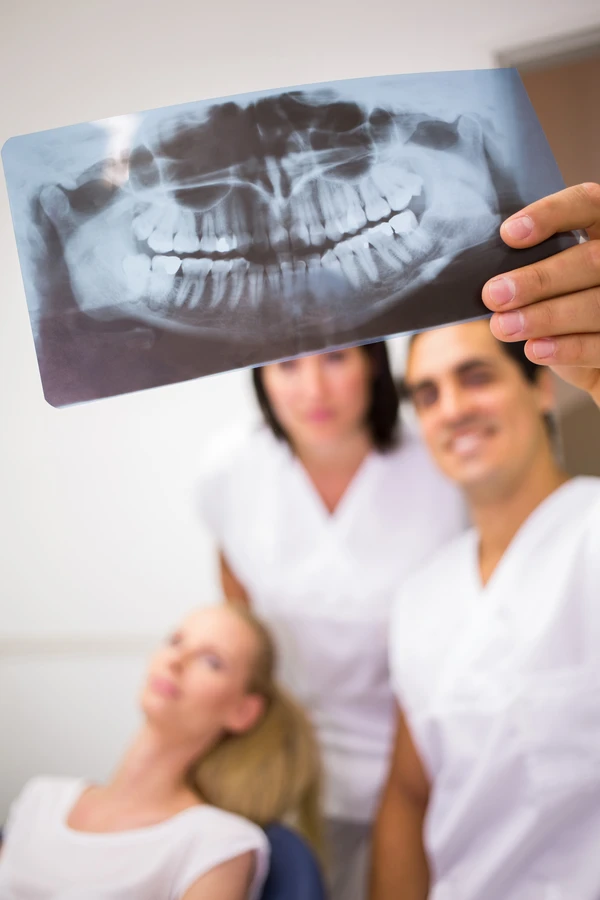
Dental Conservation: Everything You Need to Know About Keeping Your Teeth Healthy
Dental conservation is a field of dentistry focused on the prevention, diagnosis, and treatment of dental diseases to preserve natural teeth for as long as possible. A healthy set of teeth is crucial not only for aesthetics but also for overall health and well-being. This comprehensive overview will cover the basics of dental conservation and provide essential information on caring for your teeth.
Why Is Dental Conservation Important?
Preserving natural teeth offers numerous benefits. For one, it supports normal chewing function, which is essential for a balanced diet. Additionally, healthy teeth positively impact speech and self-confidence. Moreover, teeth contribute to facial expressions, so their condition also affects aesthetic appearance. Well-maintained teeth can also reduce the risk of systemic diseases such as cardiovascular conditions and diabetes.
Basics of Dental Conservation
-
Dental Care: Regular brushing, ideally after every meal or at least twice daily, is crucial for maintaining dental health. The use of dental floss and mouthwash complements brushing by removing plaque and food particles from hard-to-reach areas.
-
Healthy Diet: A balanced diet not only supports overall health but also affects dental health. Limit the consumption of sugary foods and drinks, as sugar can cause cavities. Instead, favor fiber-rich foods, dairy products, and plenty of water.
-
Regular Dental Check-ups: Routine visits to the dentist are essential for early detection and treatment of potential problems. Dentists can diagnose and address issues like cavities, gum diseases, and other dental conditions to maintain the health of your teeth.
-
Professional Teeth Cleaning: In addition to daily oral hygiene, professional teeth cleaning by a dentist is recommended. This procedure removes hard deposits (plaque and tartar) that can accumulate despite thorough at-home care.
-
Dental Protection Measures: For individuals at higher risk of dental injuries, such as those participating in sports, using dental protective devices like mouthguards or bite guards may be advised.
Treatment Options in Dental Conservation
-
Fillings: When cavities are detected early, the dentist can clean the affected area and restore it with a filling made of amalgam, composite resin, or ceramic.
-
Root Canal Treatment: If deep cavities reach the tooth nerve, a root canal may be necessary to remove the infected nerve and preserve the tooth.
-
Dental Reconstruction: For heavily damaged or fractured teeth, dental reconstruction with a crown or bridge may be required to restore the tooth's shape, function, and aesthetics.
-
Periodontal Treatment: Infections of the gums (gingivitis) or the supporting structures of the teeth (periodontitis) require specialized treatment to preserve the teeth and prevent further tissue loss.
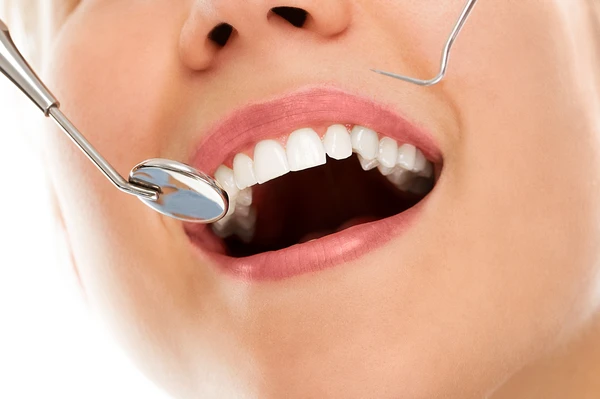
Laser Dentistry: An Innovative Solution for Your Oral Health
Laser dentistry is an advanced and gentle method for treating a variety of dental issues and improving oral health. This technique uses concentrated light to perform precise and effective treatments that are often less painful and invasive compared to traditional methods.
How Does Laser Dentistry Work?
Laser dentistry utilizes high-energy light that is focused on specific tissues in the mouth. Depending on the type of laser and its application, this light beam can be used to remove cavities, treat gum disease, disinfect root canals, whiten teeth, and remove tissue. Various types of lasers are used in dentistry, including Erbium and diode lasers. Each type has specific characteristics suited for different treatments.
Benefits of Laser Dentistry
-
Precision: Lasers allow for extremely precise treatment, removing only the affected tissue without harming the surrounding healthy tissue.
-
Pain Reduction: Laser treatments are often less painful than traditional procedures, with many patients requiring less or no anesthesia during the treatment.
-
Bleeding and Infection Control: Lasers can reduce bleeding during treatment and simultaneously disinfect the treated area, lowering the risk of infections.
-
Faster Recovery: Due to their gentle nature, laser treatments typically require less recovery time compared to conventional procedures, allowing for a quicker return to normal activities.
-
Preservation of Healthy Tissue: Lasers precisely remove only the affected tissue, preserving healthy tissue and promoting long-term oral health.
Applications of Laser Dentistry
-
Cavity Treatment: Lasers can gently remove cavities, minimizing the loss of healthy tooth material.
-
Periodontal Treatment: Lasers are commonly used to treat gum diseases such as periodontitis, removing inflamed tissue and promoting healing.
-
Root Canal Treatment: Lasers can eliminate bacteria in the root canals and thoroughly clean them, contributing to a successful root canal treatment.
-
Teeth Whitening: Lasers can assist in teeth whitening by removing stubborn stains and creating a brighter smile.
-
Tissue Management: Lasers can be used for contouring gums and other soft tissue procedures, achieving aesthetic results.
Is Laser Dentistry Suitable for Everyone?
Laser dentistry is safe and effective for most patients. However, your dentist will determine if this treatment option is appropriate for your specific situation. Individuals with certain health conditions or medical implants may need to take special precautions. Overall, laser dentistry offers an innovative and gentle solution for many dental problems. With its precision, pain reduction, and quicker recovery, it is an appealing option for patients seeking advanced dental care. If you want to learn more about the possibilities of laser dentistry, discuss your options with your dentist.
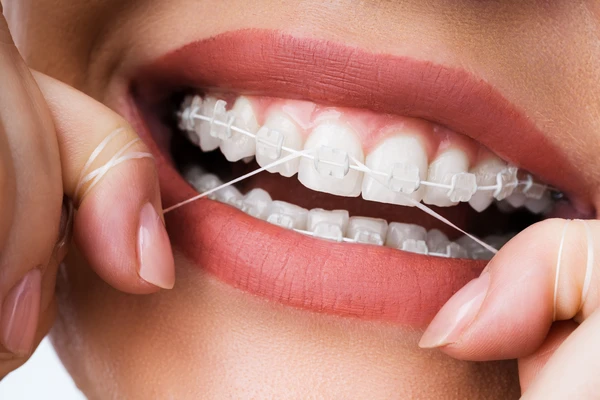
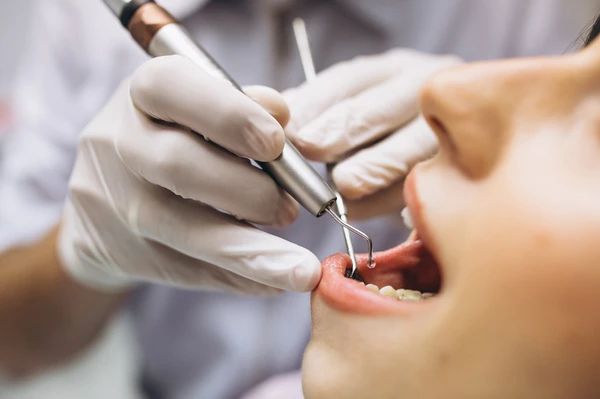
Cosmetic Dentistry: Realizing the Smile of Your Dreams
A radiant smile is a crucial aspect of our outward appearance and significantly contributes to our self-confidence and well-being. Cosmetic dentistry offers a range of solutions to enhance the appearance of your teeth and beautify your smile.
What is Cosmetic Dentistry?
Cosmetic dentistry is a branch of dentistry focused on improving the aesthetic appearance of the teeth. Unlike purely functional dentistry, which concentrates on the health and functionality of the teeth, cosmetic dentistry aims to optimize the appearance of the teeth. Various procedures are used to correct issues such as discoloration, misalignment, wear, or other aesthetic problems.
What Procedures are Included in Cosmetic Dentistry?
-
Bleaching: One of the most popular methods for whitening discolored teeth. Professional bleaching uses special gels or lasers to remove stubborn stains and achieve a bright, white smile.
-
Veneers: Veneers are ultra-thin ceramic shells that are permanently bonded to the front of the teeth to cover irregularities, discolorations, or gaps, creating a perfect smile.
-
Tooth-Colored Fillings: Instead of traditional amalgam fillings, cosmetic dentistry uses tooth-colored materials to treat cavities without affecting the aesthetic appearance.
-
Dental Jewelry: A trendy option to add a personal touch to your smile. Small gemstones or metal decorations can be applied to the teeth for a sparkling detail.
-
Correction of Misalignments: In addition to traditional orthodontic treatments like braces, cosmetic dentistry also offers invisible aligners to discreetly correct misalignments.
Why Choose Cosmetic Dentistry?
An attractive smile can not only enhance your appearance but also boost your confidence and promote positive social interactions. People who are satisfied with their smile tend to present themselves more confidently and feel more comfortable in both professional and personal situations. Moreover, improving the aesthetic appearance of your teeth can also promote overall oral health. By correcting imperfections or sealing cracks, potential issues such as cavities or gum disease can be prevented.

Dental technology
Precision and aesthetics for healthy teeth
Dental technology is a crucial area of dentistry that deals with the manufacture of dental restorations and prostheses. Its aim is to restore or improve the function, aesthetics and health of teeth. By using the latest technologies and materials, dental technology plays an important role in creating natural, durable and aesthetically pleasing dental restorations.
Materials in dental technology
The choice of materials plays a decisive role in the quality and longevity of dental restorations. Modern materials such as zirconium oxide, lithium disilicate, ceramic and composite offer excellent esthetics, biocompatibility and durability. They make it possible to produce restorations that blend in seamlessly with the natural appearance of the teeth while ensuring long-term functionality.
The role of dental technology
Working closely with dentists, dental technicians produce customized tooth replacement solutions that meet the specific needs and requirements of each patient. This includes the production of crowns, bridges, inlays, onlays, veneers, dentures and implant components. Precision is the key to ensuring a perfect fit and function.
Aesthetics and function in harmony
An important aspect of dental technology is the consideration of esthetic aspects. The aim is to produce restorations that are not only functional but also aesthetically pleasing. This requires a deep understanding of the shape, color, translucency and surface texture of natural teeth. Through craftsmanship and artistic skill, dental technicians are able to achieve results that are almost indistinguishable from natural teeth.
Modern technologies in dental technology
Dental technology has benefited from advances in digital technology, leading to more precise and efficient manufacturing processes. Computer-aided design and manufacturing (CAD/CAM) techniques enable dental technicians to produce restorations with high precision and accuracy of fit. 3D printing processes enable the production of complex dental structures with unprecedented accuracy.
Dental technology through the ages
Dental technology has undergone a remarkable evolution over the years. From traditional handcrafted techniques to state-of-the-art digital manufacturing processes, the field has constantly evolved to meet the needs of patients. The focus is always on quality, precision and patient satisfaction.
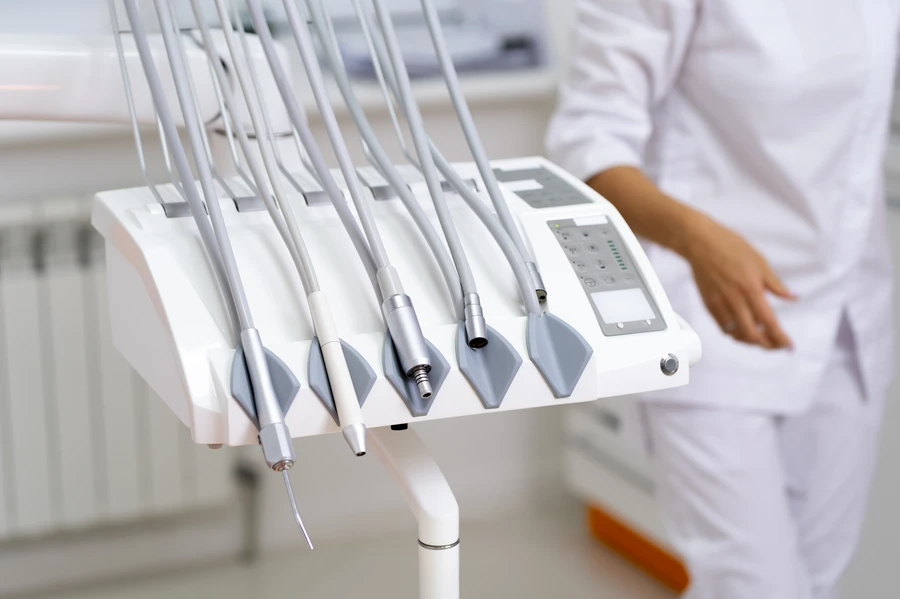
Oral Surgery
Oral surgery is a fascinating field within dentistry that focuses on the diagnosis, treatment, and prevention of diseases, injuries, and deformities in the mouth and jaw area. This specialized discipline combines surgical techniques with dental expertise to address a wide range of oral health issues.
Treatment Spectrum of Oral Surgery
Oral surgery encompasses a variety of procedures, ranging from routine interventions to complex surgical operations. These include:
-
Tooth Extractions: Removing damaged, diseased, or irreparable teeth is a common task in oral surgery. This may be necessary due to decay, advanced periodontal disease, or lack of space in the jaw.
-
Wisdom Tooth Removal: Wisdom teeth, also known as third molars, often cause problems such as pain, inflammation, or displacement of other teeth. Removing these teeth often requires surgical intervention, especially if they are not fully erupted.
-
Implantology: Implants are artificial tooth roots placed into the jawbone to replace missing teeth. Oral surgeons are specially trained to place implants precisely and safely, making it an important treatment option for patients with tooth loss.
-
Jaw Surgery: Correcting jaw misalignments, such as malocclusions of the upper or lower jaw (dysgnathia), often requires surgical procedures. These surgeries can improve jaw alignment, facilitate chewing, and enhance the aesthetic appearance of the face.
-
Apicoectomy (Root End Surgery): For inflammation or infections at the root tip of a tooth, an apicoectomy may be necessary. This involves removing the inflamed root tip to eliminate the infection and preserve the tooth.
Benefits of Oral Surgery
Oral surgery offers numerous benefits for patients, including:
-
Improved Oral Health: By treating dental problems and jaw misalignments, oral surgery can enhance overall oral health and reduce the risk of complications.
-
Pain Relief: Removing painful or inflamed teeth can provide immediate relief and improve the patient's quality of life.
-
Aesthetic Improvements: Jaw surgical procedures can not only address functional issues but also enhance the aesthetic appearance of the face, boosting the patient’s self-confidence.
Aftercare and Recovery
Proper aftercare following oral surgical procedures is crucial to ensure a quick recovery and optimal results. This may include following wound care instructions, taking prescribed medications, and attending regular follow-up visits with the oral surgeon.